Student Blog
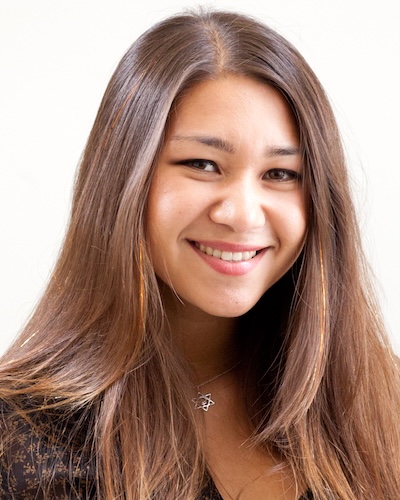
Adaptation Elation: Equipment Creation! ⟩
November 11, 2015, by Ariel
As an occupational therapist to-be, I’m always keeping my eyes peeled for cool products that will help my future patients live their lives to the fullest.
Today in class, we had the opportunity to not only learn about adaptive equipment, but also try our hands at designing our very own product! As part of our lesson, we were given an “adaptive equipment challenge,” a la Iron Chef, where we were told to use the materials given to us (cardboard, duct tape, foam pipes . . . creativity) to create a piece of adaptive equipment. My team made a prototype for an adaptive chair, called the ‘Astro Chair Unlimited.’ We designed it specifically to help support children who have difficulty sitting upright when otherwise unsupported. Our product includes a fully padded seat cushion to relieve pressure and keep kids comfortable, a fun customizable (space-themed!) design, and supports on each side intended to help the child stay seated in an upright position while at a tabletop. 3-2-1 . . . ENGAGE in meaningful activities!!!
Here’s a picture of our final creation:

Adaptive chair
Another group in my class chose to make an adaptive Catch Game. Here’s a photo of what they came up with:
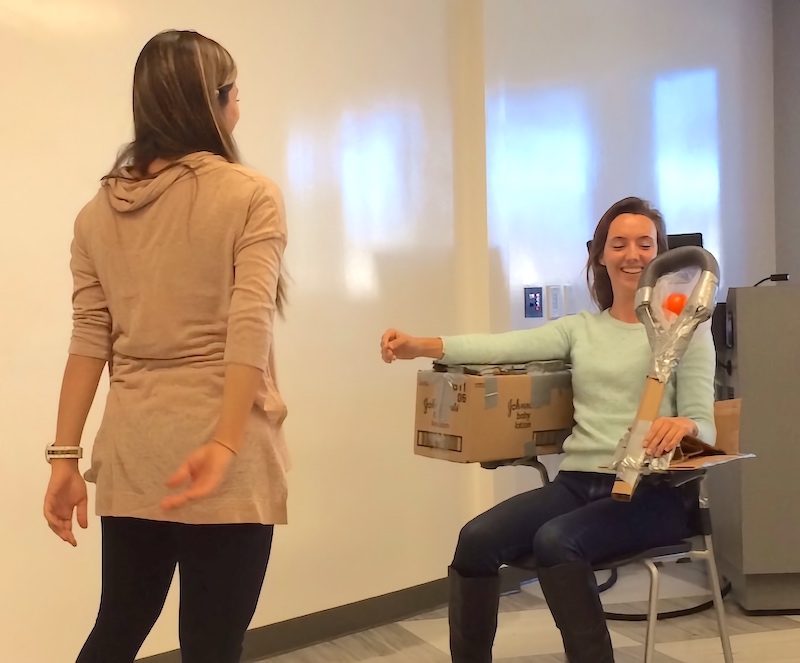
Catch Game
After prototyping our adaptive chair, I was interested in what else was out there for people with disabilities. Given what I found through my research, it seems like the possibilities are truly endless! Here are just a few of the ideas that struck my fancy.
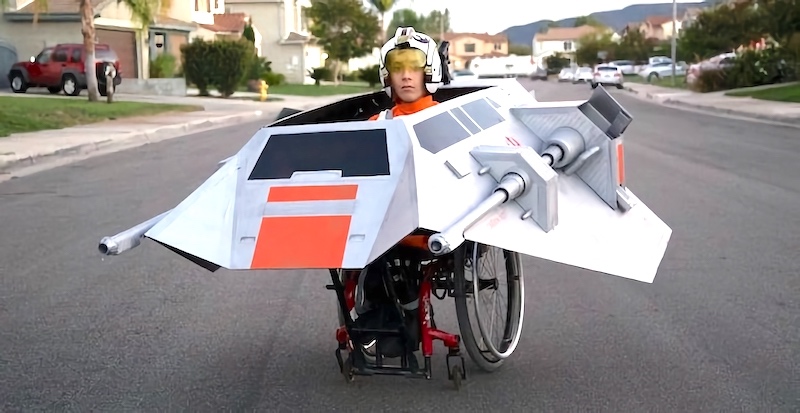
A “Star Wars” snowspeeder atop a child’s wheelchair, complete with flapping wings and working guns that shoot glowing Nerf darts

Shoes for children or adults with splints or AFOs

An adaptive croquet mallet
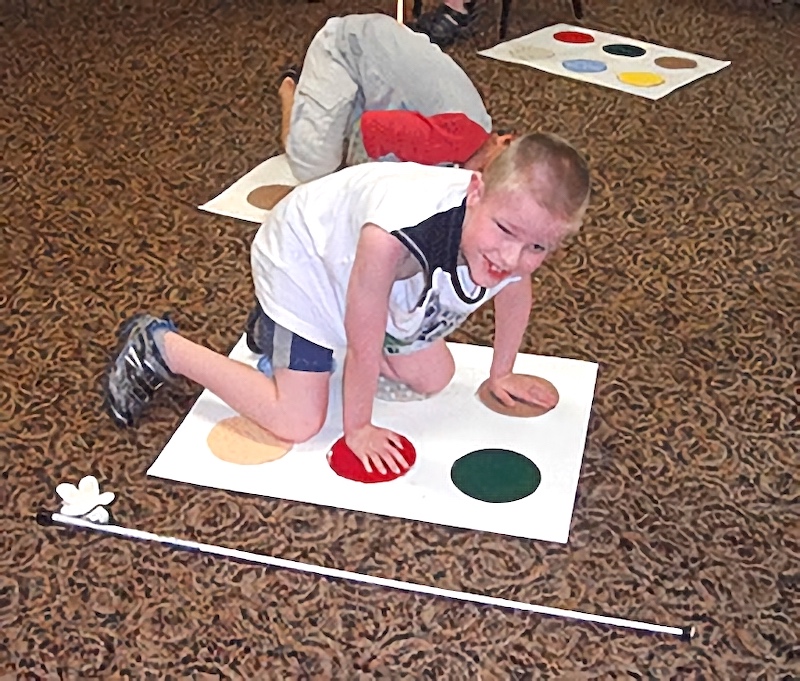
Braille Twister game
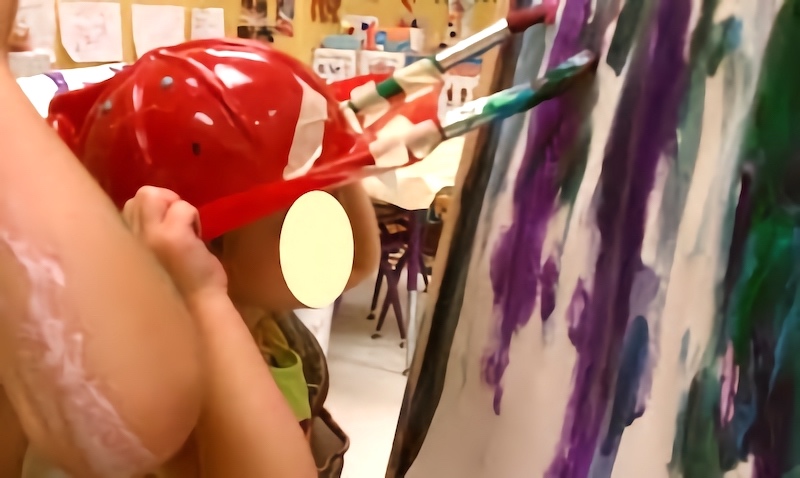
Painting with hats
These ideas, and the plethora of others out there, are such great sources of inspiration. As Maria Montessori put it, “Watching a child makes it obvious that the development of his mind comes through his movements.” We as occupational therapists have the pleasure of helping people in all walks of life — no matter what their abilities — become truly UNSTOPPABLE!

⋯
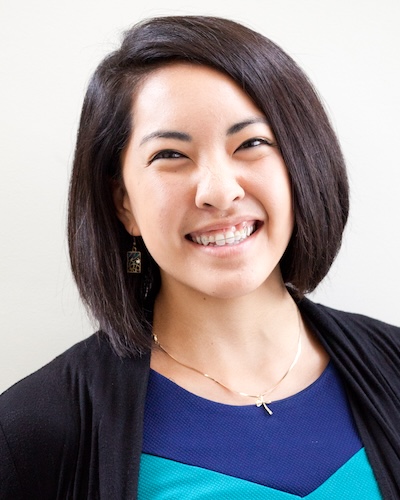
Learning How To Dress in OT School! ⟩
November 10, 2015, by Rashelle
In OT 502: Adult Physical Rehabilitation, we have a lab every week to learn practical skills that we can incorporate when treating patients — this week depicted below, focused on the activity of dressing.

Sock Aid and Dressing Sticks
The picture on the left demonstrates me using a sock aid! This assistive device is often utilized with adults, who have physical limitations that make dressing difficult. The sock aid can facilitate modified, independent dressing for people following surgeries to the hip, spine or legs, or for those who may live with chronic diseases such as arthritis, multiple sclerosis or Parkinson’s disease. Within that same lab, we learned about the benefits of dressing sticks, button hooks and reachers to assist with upper body dressing (as pictured on the right).
Additionally, in my level 1 fieldwork rotation, I learned how to dress a patient with compression bandages, in order to treat edema. Edema is a condition in which a person has a fluid buildup in a part of their body. By dressing patients with these bandages about once a week, the fluid can drain away from the swollen region.
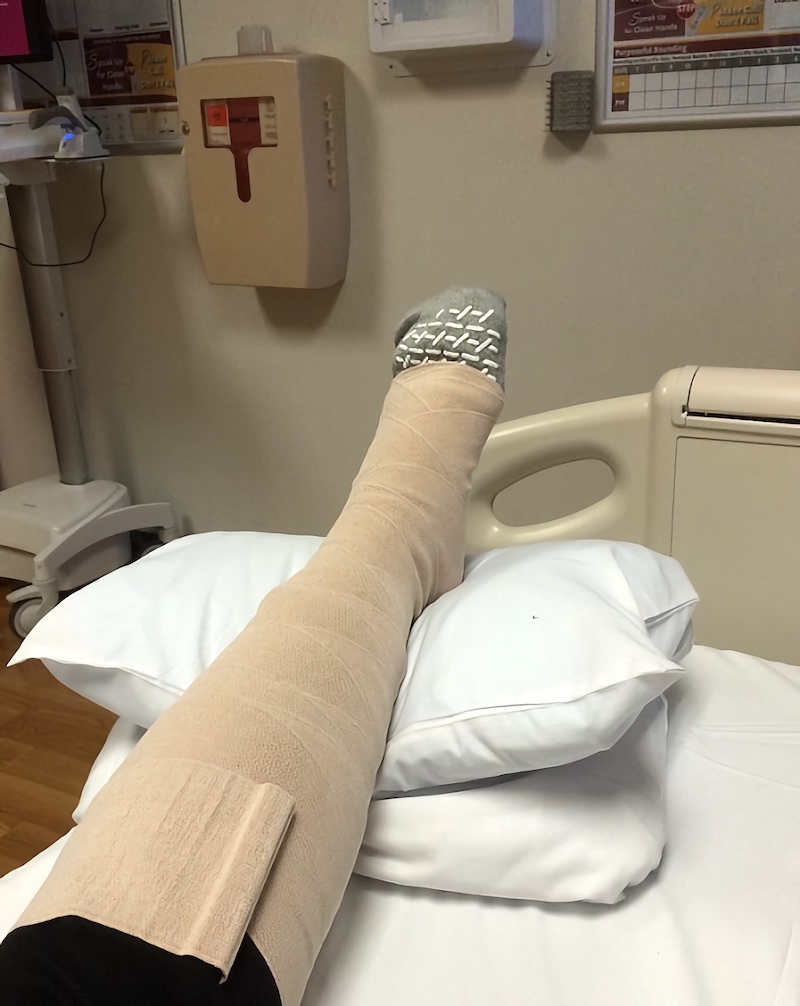
Edema Bandaging
(That’s my foot! I even got the real patient experience by having to lay in the hospital bed).
Furthermore, while you can learn these patient dressing techniques at most occupational therapy schools — USC also teaches students how to dress professionally and with school spirit!

Joe and Ellen Dressing Professionally
Here, Joe Ungco, a fellow student ambassador, and Ellen Wleklinski, an OTD resident are modeling their business attire, which we wear often for class presentations, fieldwork, conferences, meetings or interviews.

USC tailgate outfits
Finally, we FIGHT ON proudly with our traditional USC attire for football games, tailgates and other sporting events.
⋯

One big happy family ⟩
November 8, 2015, by Jodie
As this semester is coming to an end, I have began to reflect on how thankful I am to have such an amazing group of classmates in the program. Even though we are split into three different cohorts, whenever there is an opportunity for everyone to come together, we are like one big family! Yesterday we had our homecoming tailgate with the physical therapy students and it was a ton of fun getting to catch up with classmates, as well as mingle with the PT students. Our social chairs do a wonderful job planning all these events for us to all come together to have a good time. The next division-wide event that we are looking forward to is the OT/PT Forum and our Thanksgiving Potluck! Stay tuned for my next blog with updates from all the festivities!
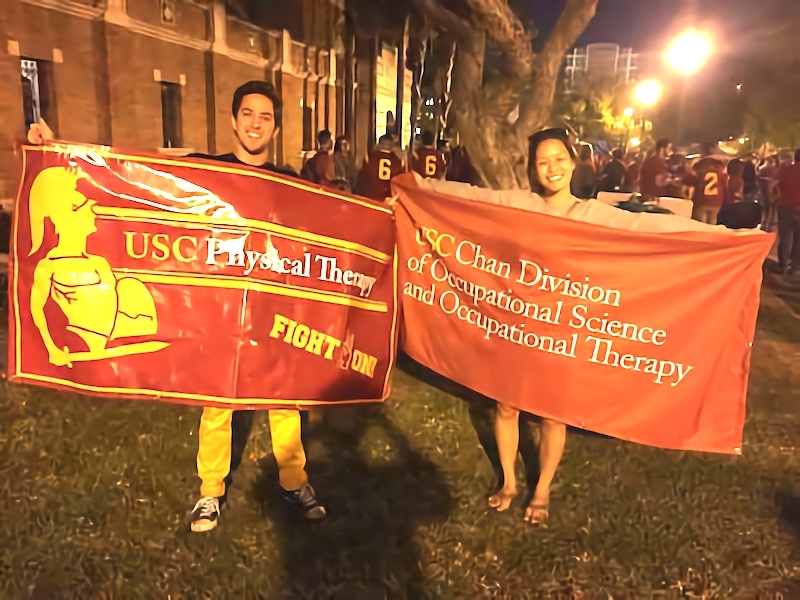
Our wonderful second-year social chair, Jen, and PT social chair, Zach!

USC OTs at the homecoming tailgate!
And most importantly . . . USC won last night! Fight on!
⋯

Getting Crafty with Neuro! ⟩
November 7, 2015, by Heather
In our first semester of the Entry-Level Master’s Program, we take a course called the Foundations of Neuroscience. For many students, it is one of their favorite classes. It is challenging, instructive and interesting. Not to mention, it is taught by Dr. Leah Stein Duker, who is incredibly talented, intelligent, and well respected within the Division and the entire field of Occupational Therapy.
As part of the course, we are provided the opportunity to get creative with a “neuro project” of our choosing. Many of the projects that my classmates chose to create depicted the functions of the various structures of the brain. To name a few: the neural pathways, the cortical homunculus of the primary motor cortex, and the innervations of the the central and peripheral nervous systems.

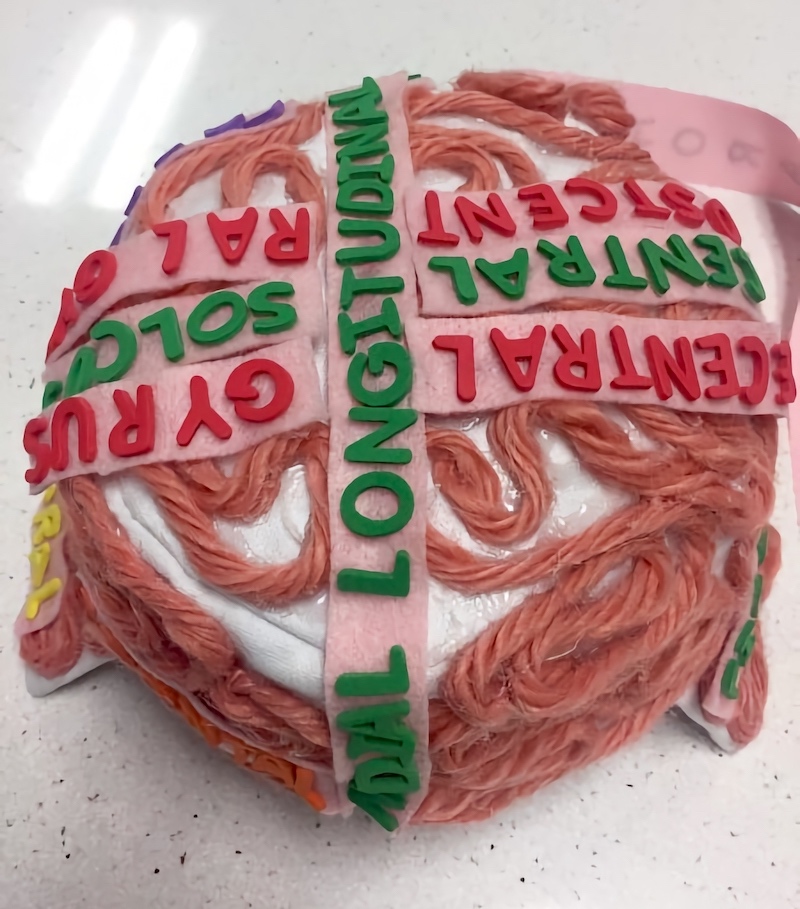
For my extra credit project, I created the peripheral nerve distribution of the hand as part of the brachial plexus. I did this project because I am interested in hand anatomy and the biomechanics of the upper extremity. Unfortunately, I do not have a picture of my project to share, however, I took a photo of another classmate’s project that did something similar by sewing the innervations of the hand together in glove form.
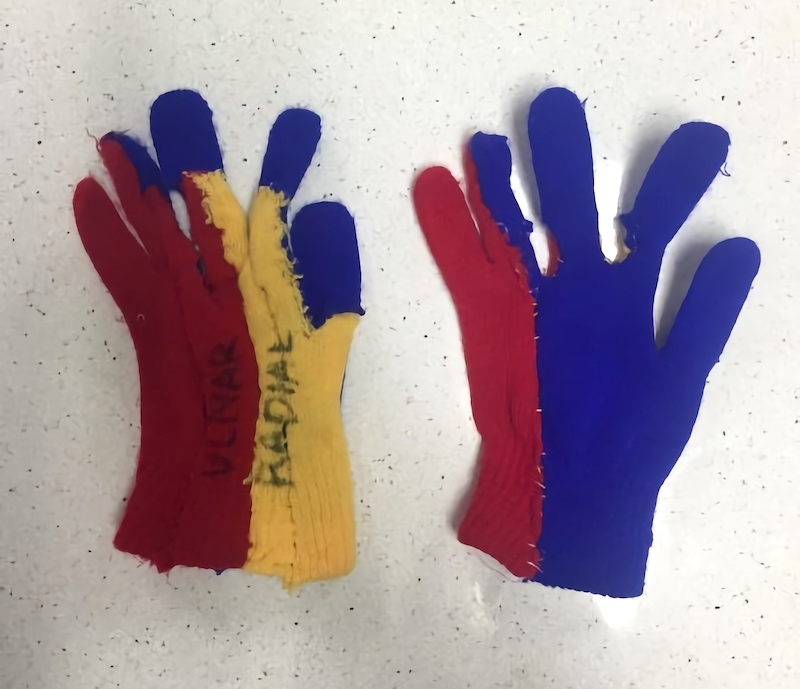
And just to get a little technical on you, the brachial plexus are formed from the junctions of the anterior rami from C5-T1. They innervate the entire upper limb. The nerves that I painted on the hand are the musculocutaneous nerve (green), the ulnar nerve (blue), the median nerve (yellow), and the radial nerve (red). Voila!
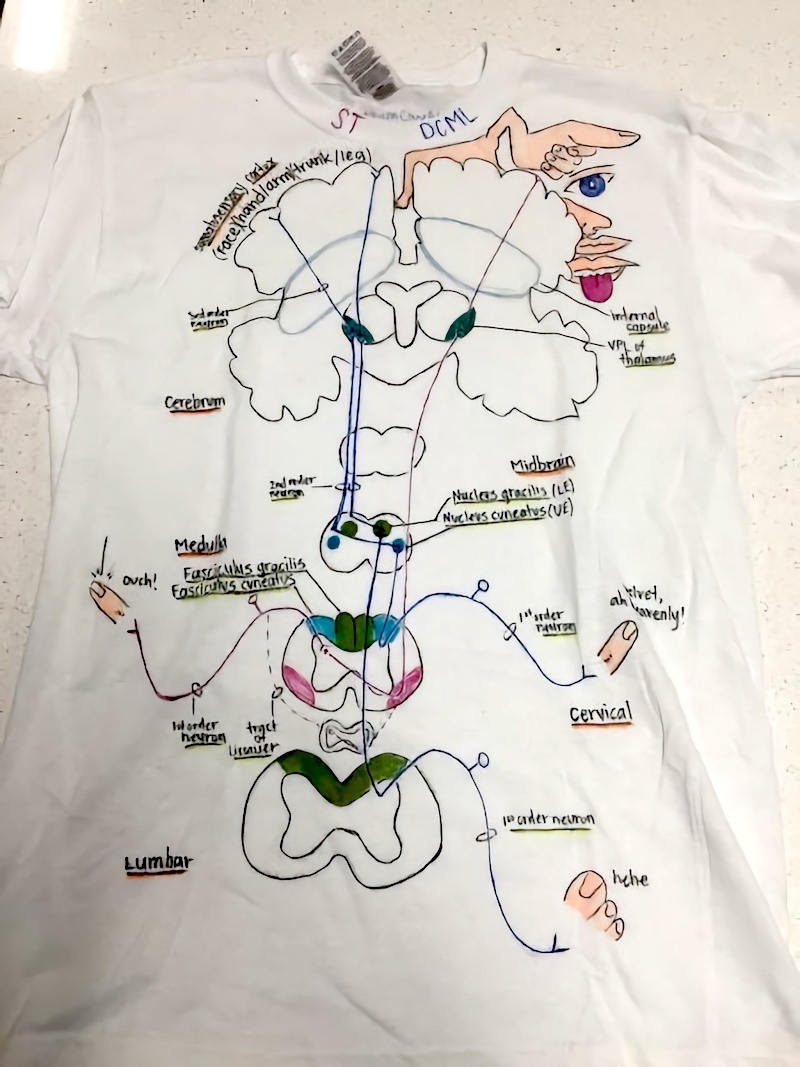

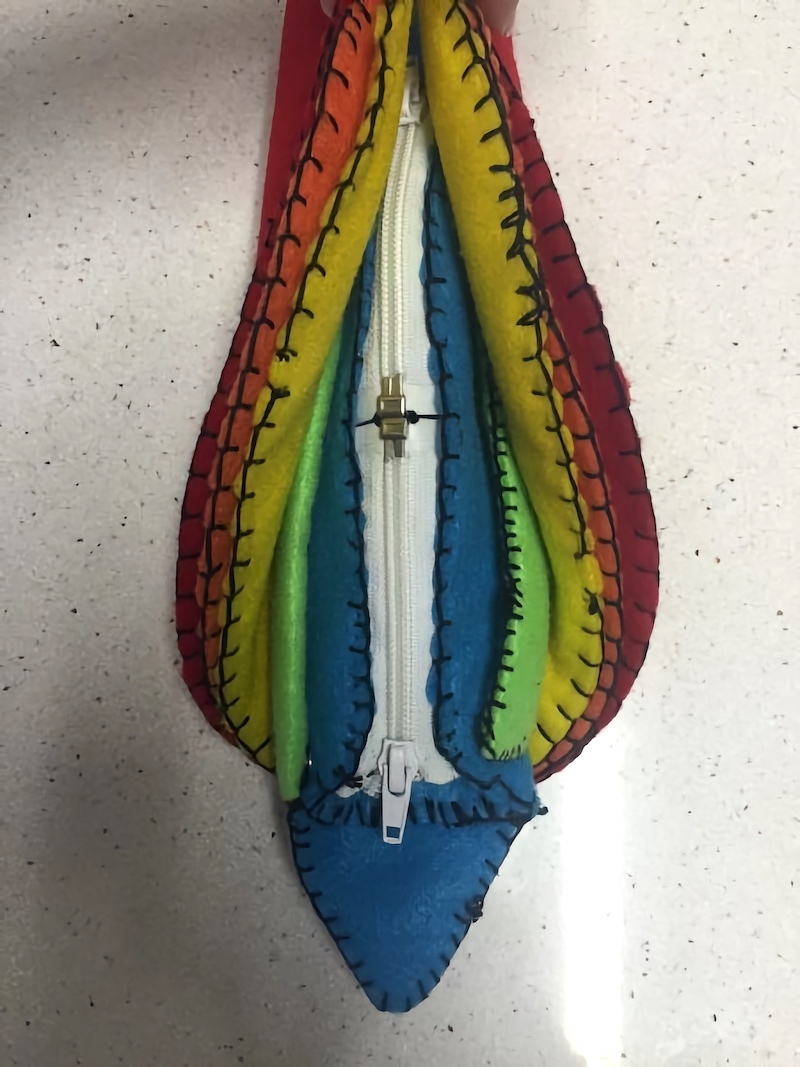
P.S. If anyone can tell me what this last project is supposed to be, comment and you will get a gold star!
⋯

So, what is the Externship? ⟩
October 28, 2015, by Heather
As part of the curriculum in the Entry-Level Master’s program, we are given the opportunity to capstone our professional development through a “Leadership Externship.” The externship is part of a course that is meant to foster skills in leadership, professional behavior, and an understanding in public policy and it impacts on our profession.
The externship is a two-week experience where students are provided with the opportunity to build leadership skills and explore an area that is of interest to them. In the past, students have traveled across the country and internationally to participate in a variety of experiences. Some examples include working with advocacy or cultural groups, volunteering for special interests groups such as the Red Cross or American Cancer Society, working in orphanages in Ghana and Thailand, and volunteering with community-based rehabilitation programs in Costa Rica and Turkey. Locally, students have spent their externships understanding the logistics of hospital administration and program development at Cedars Sinai Medical Center, Children’s Hospital of Los Angeles, and Norris Cancer Hospital.
I am just the beginning of planning for my externship. I have ambitions of traveling abroad with some of my classmates to a rehabilitation program in Cuba. I am also considering continuing my community-based project of working with musicians with repetitive motion injuries under the supervision of an Occupational Therapist or Certified Hand Therapist.
I am keeping my options open as I look forward to this opportunity in only a few months!
⋯





